Commentary
I want to take this opportunity to once again thank our members for participating in our research. The June 60-Second Survey, open to all, garnered nearly 1,000 responses and around 250 volunteers for a roundtable discussion. Your time, energy, and expertise
are key to the success of AACRAO Research.
AACRAO Research Update
The Role of the Modern Registrar for Student Success and Enrollment Management - June 2022 60-Second Survey Report
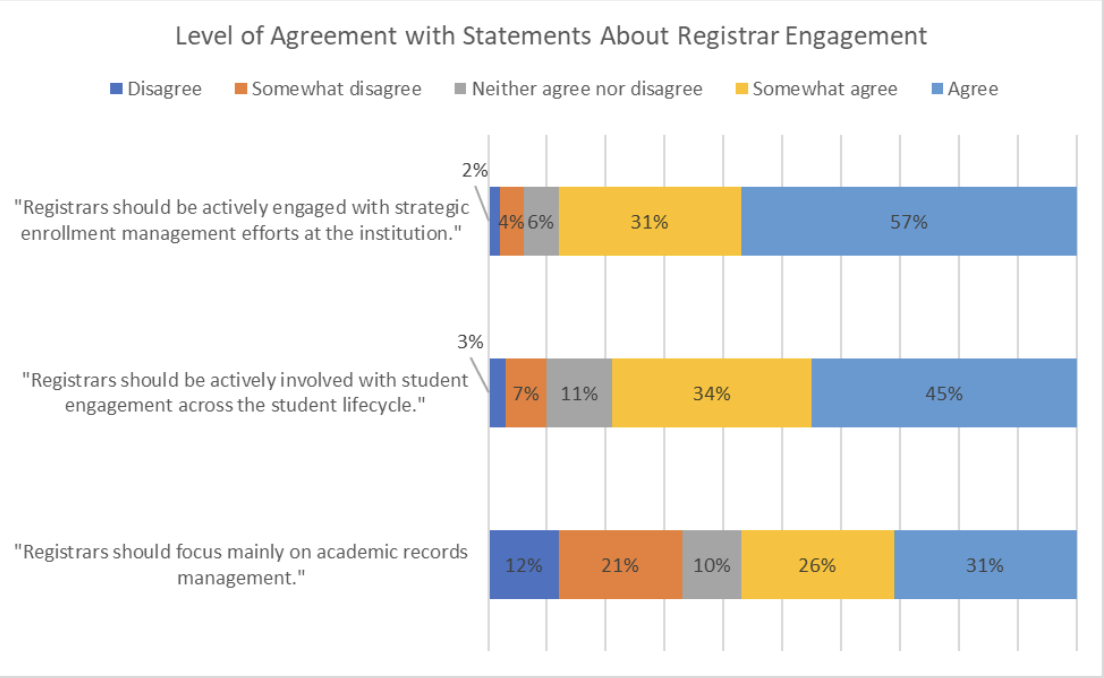 | Nearly 1,000 members responded to the July 2022 60-Second Survey. All AACRAO members received an invitation to provide their perspectives on what the role of the registrar should be at their institution. Particular attention to what the role
of the registrar should be for student engagement and enrollment management. This data will act as a resource to shape a roundtable discussion this summer, a white paper, and professional development opportunities by AACRAO. |
The report release date is June 29th for
all signed up to receive AACRAO Research updates. View the sneak peek of a data point above.
Academic Operations: Benchmarks and Student Success
Coursedog sponsored our first comprehensive look at academic operations and the relationship to student success. The report includes data from 281 undergraduate-serving institutions. The image to the right depicts some key data points about catalog management practice. | 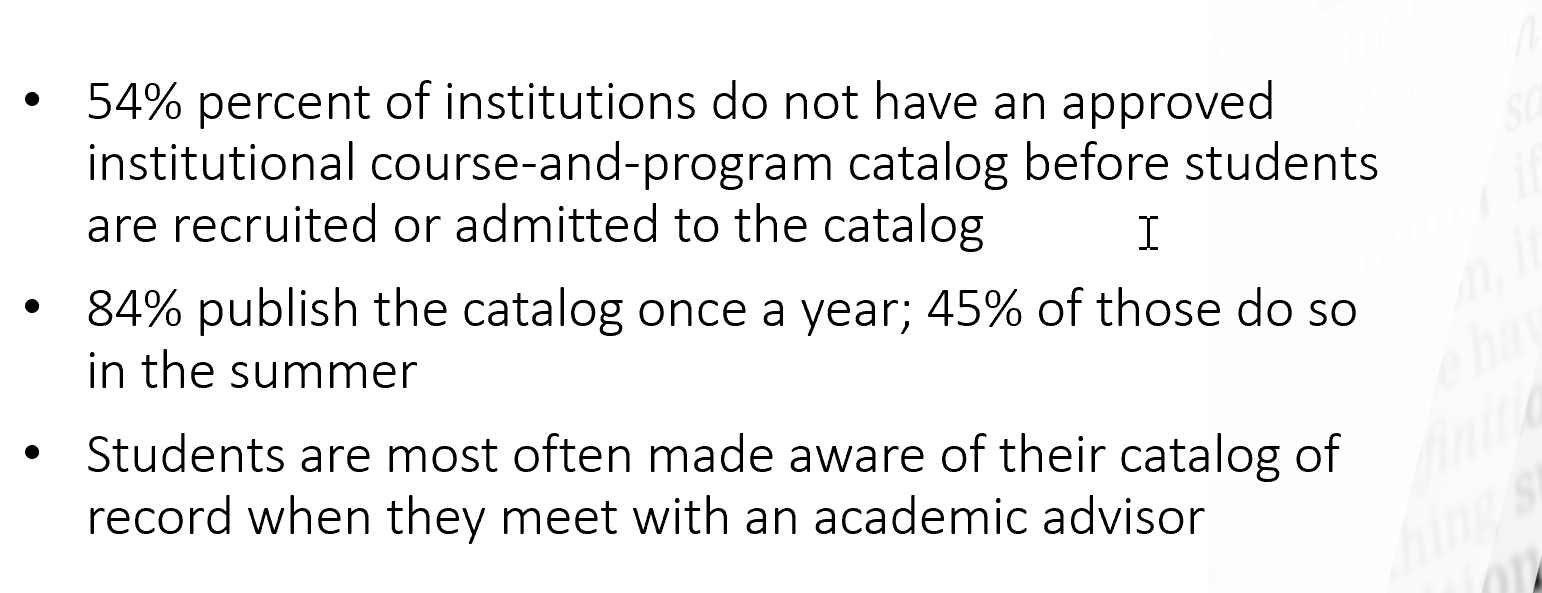
|
A Look Ahead
- In July, we will conduct a roundtable discussion with volunteers who responded to the modern registrar 60-Second Survey.
- The July 60-Second Survey will use data to project course and program demand.
- In late July or early August, AACRAO primary contacts will receive an invitation to complete a comprehensive survey on class scheduling practices. This survey expands upon the 2016 60-Second Survey on the same subject.
- In September, the chief admissions officers will receive an invitation to participate in a career profile survey. The last survey conducted for this profession was in 2019.
Disentangling Transfer: Identifying and resolving intra- and inter-institutional roadblocks in the credit-mobility ecosystem
Want to hear how collaborative research between five institutions is tackling the issue of what prospective transfer learners want from campuses to help with credit mobility? How about how the institutions examine their policies, practices, and use of
technology from a holistic perspective to identify roadblocks and opportunities to excel?
If you answered yes, consider registering for the 2022 AACRAO Transfer & Technology Conference. AACRAO has been working with these institutions for a few years
to help them address the issues above; the collaborative is about to embark on an ambitious plan to ameliorate the roadblocks. One of the key points garnered from the learner focus groups is their desire to have one location and one interface to understand
what credits transfer, how they will apply to a degree, how to apply, and other related transfer tasks. The learners noted they often have to go to many different sources, which change as they advance through the transfer student pipeline. Please
see the diagram below for a pictorial example of the learner’s experience.
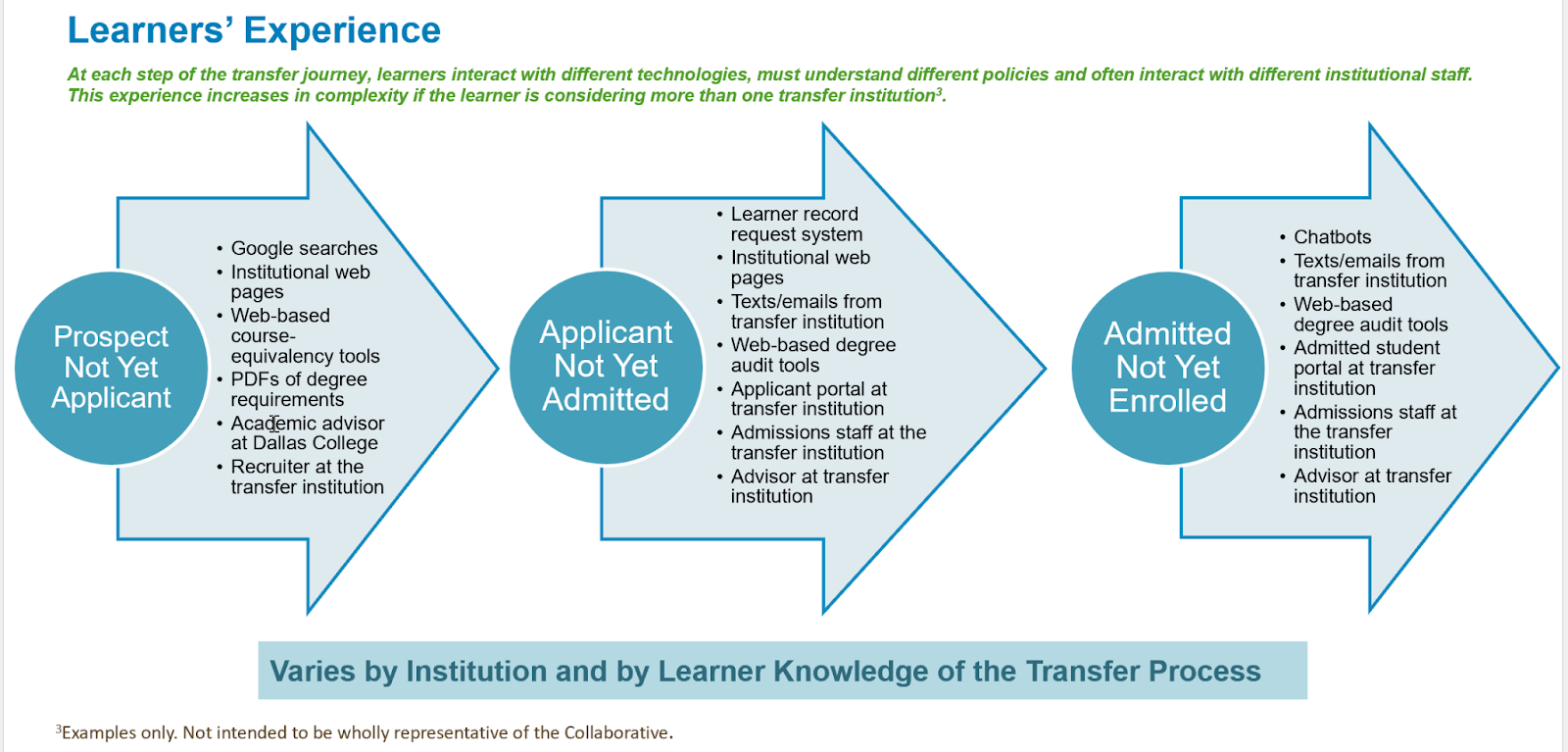
Current Higher Education Research and Related Topics
New Research Explores Staffing Challenges in Financial Aid Offices
A new study from the National Association Of Student Financial Aid Administrators (NASFAA) explores ongoing challenges for staff in financial aid offices across the country. The study shows that before the pandemic, offices were experiencing challenges
in keeping up with the workload. The study looks in detail at the effect of the pandemic on financial aid staffing. Key areas examined include:
- Reduced capacity: 56% of respondents reported operating at a reduced staffing capacity.
- Significant turnover rates: Most offices reported having difficulty filling up to five-six positions for both award years 2019 - 20 and 2020 - 21.
- Administrative capability concerns: More than half of respondents experienced concern about their ability to serve students based on current staffing levels.
- Difficulty hiring: An overwhelming majority (86%) reported not receiving enough qualified applications, and most felt it was salary restrictions making the jobs uncompetitive.
Broad Economic Analysis Shows Correlation Between Student Debt and Perceived Value of Higher Education
Research and analysis by the U.S. Federal Reserve examined the economic well-being of U.S. households in 2021. One set of findings of interest to the higher education community is the relationships between degree completion, student debt, and the perceived
value of higher education. Most Americans who attended college still believe the benefits of higher education outweigh the financial costs. However, there was wide variation in this belief based on factors such as age, degree completion, and student
debt.
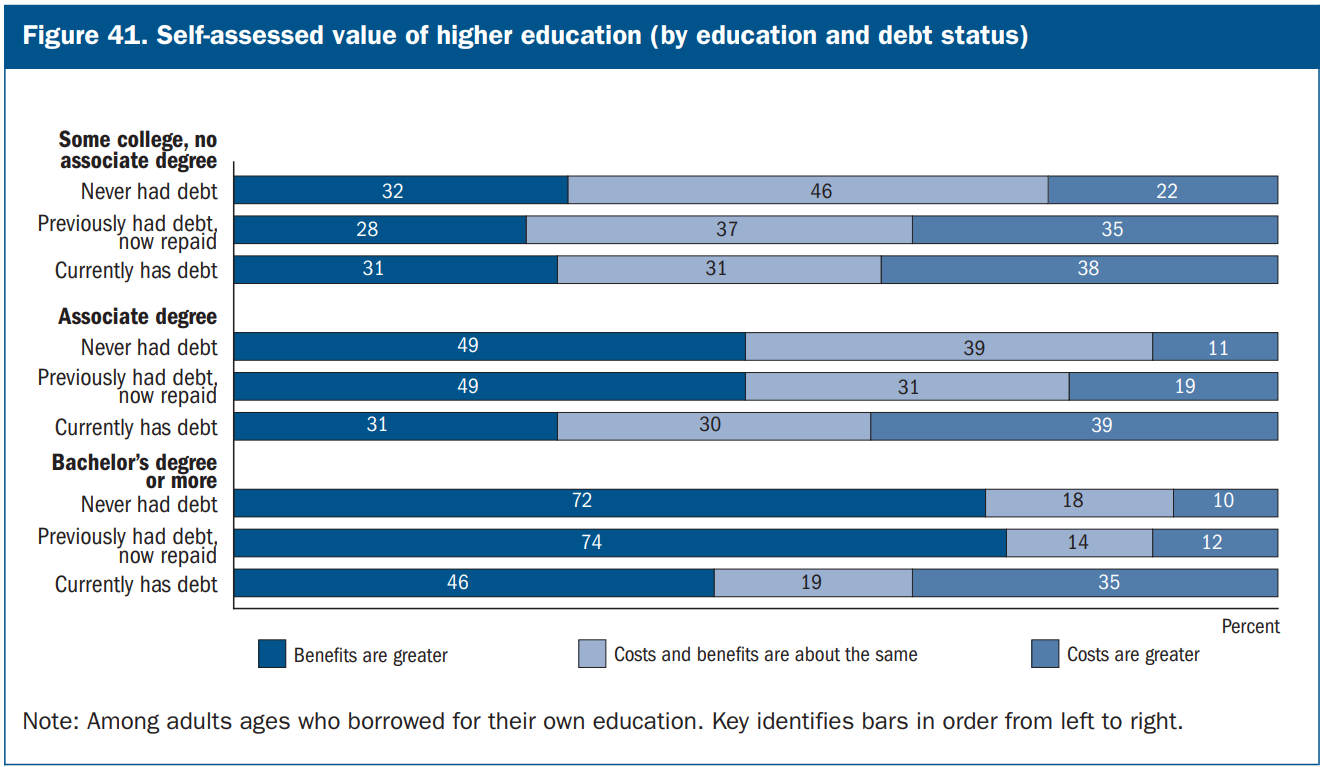
New Report on the Value of College and the Likelihood of Enrollment
A new report from Strada Education Network examines the perceived value of college and the likelihood of enrollment in an environment with continuing declines in enrollment. This research examines expectations and sentiments around additional education
and training. Key findings include:
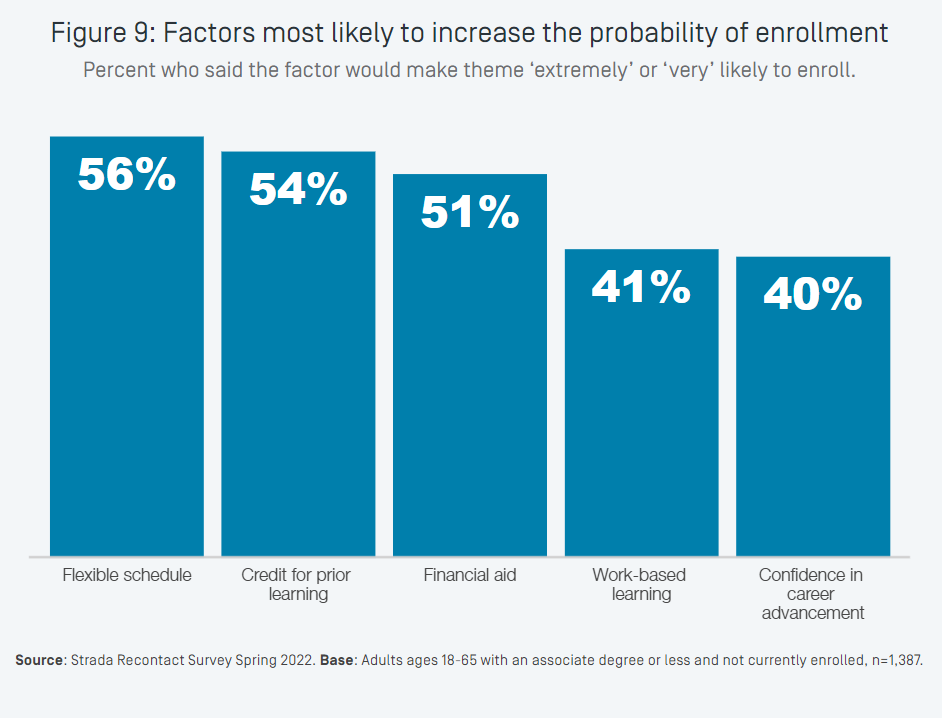 | - Confidence in the value of education has been declining over the past two years.
- Young people, Black respondents, and those who have attended some college but have not completed are most likely to say they will enroll within the next five years.
- Both expectations about future enrollment and perceptions about the value of education predict enrollment behavior.
- Connections between education and career can attribute to confidence in the value of education and career outcomes.
|
New Study Examines Where Students Go To College
An article in The Chronicle of Higher Education examines new research on where students go to college. The full study is available here. The study used IREDS data to characterize college “markets” in each state. The focus was on four-year institutions
and finding where students are more likely to stay within their state than migrate elsewhere. Key findings include:
- The states of Texas, Louisiana, and Michigan are the most self-contained markets.
- The University of the District of Columbia and the University of Nevada enroll the highest percentage of in-state or adjoining state students.
- The University of Michigan, the University of Colorado, and the University of Alabama enroll the smallest percentage of in-state or adjoining state students.
- National public universities, national private universities, national liberal arts colleges, historically black colleges and universities, and primarily online institutions report experiencing similar migration patterns.
New Policy Brief Examines Using Common Education Data Standards (CEDS)
With policymakers considering implementing a Federal Student-Level Data Network, this policy brief from AEM and IHEP examines using Common Education Data Standards (CEDS) in that role. The brief provides explanations of CEDS and its standards and policy
implications and examines current higher education data elements.